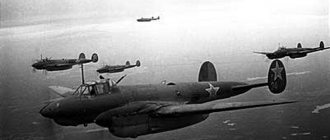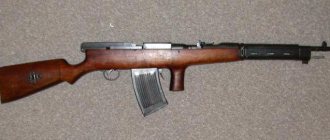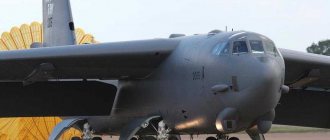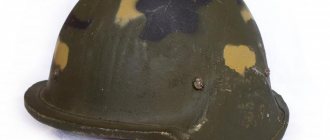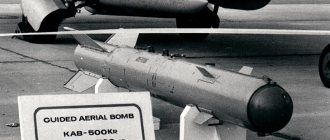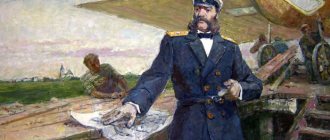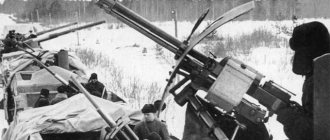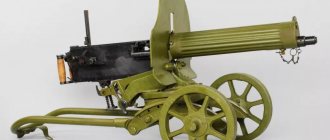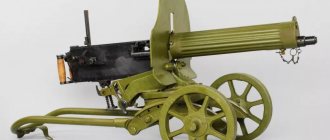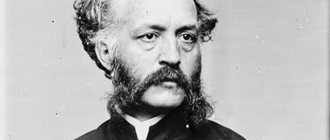Try asking any random person to name the most famous aircraft designers. Surely the names of Ilyushin, Tupolev, Yakovlev and Sukhoi will be mentioned. Perhaps a few more famous names will be heard.
But the name of the creator of the legendary “Pawn” (Soviet bomber), talented aircraft designer Vladimir Mikhailovich Petlyakov, undeservedly found itself in the shadow of the luminaries. A plane crash interrupted the life of this extraordinary man at the peak of his design activity.
Biography pages
In 1891, the family of official Mikhail Ivanovich and Maria Evseevna Petlyakov vacationed in the village of Sambek, Taganrog province. It was here on June 15 (27) that their first son was born, named Vladimir. In 1896, already in Moscow, his father unexpectedly died and his mother left with the children to Taganrog to live with her relatives.
Maria Evseevna had to work hard so that all five children could receive an education. After graduating from the parish and then the Taganrog Secondary Technical School, Petlyakov, on his second attempt in 1912, entered the mechanical faculty of Moscow Technical University (now Bauman Moscow Higher Technical School).
But the family is in great need and Vladimir drops out of school. Then revolution and civil war. Having to work in different places, and even make a career at the Taganrog railway depot, Petlyakov was appointed acting head of the section's traction service. After the civil war, the young Soviet government began to take measures to transition to a peaceful path.
In 1921, the Council of People's Commissars decided to return to study those who had previously left universities.
Having continued his studies at MSTU, Petlyakov works as a laboratory assistant at the legendary TsAGI (Central Aerohydrodynamic Institute) under the leadership of A.N. Tupolev. In 1922, he defended himself on the topic “Light single-seat sports aircraft” and became a certified mechanical engineer.
Contrary to the fashionable trend of those years to use biplanes made of wood in design, the young designer developed a monoplane with metal elements, which earned an enthusiastic review from Professor A.I. Putilov.
The young designer named the plane, which took off on October 21, 1923, “ANT” in honor of his leader, under whose leadership he took part in the work on snowmobiles, gliders, gliders and even an airship.
Beginning of work
Having completed his studies, Petlyakov began working at TsAGI, eventually becoming a close friend and assistant to A.N. Tupolev. The second monoplane of the ANT series was designed as an all-metal aircraft.
Being responsible for the development of the wings, V.M. Petlyakov and V.N. Belyaev invented a method for calculating a multi-spar wing. For a long time, all design bureaus in the country used this invention in their calculations. Petlyakov himself personally participated in one of the ANT-2 test flights.
He also took part in the creation of the ANT-3 (R-3) - the first aircraft to make record flights. The first-born of the series, called “Proletarian,” flew 7,150 km, and the next aircraft, “Our Answer,” already covered 22,000 km.
The history of the creation of the Ant-4 (TB-4), which became the country's first heavy bomber, is very interesting. Initially, an order for the creation of a heavy aircraft capable of dropping mines, bombs and torpedoes was attempted in England at the famous. However, the British asked for half a million rubles and a year and a half.
It was prohibitively expensive and took too long. Then TsAGI carried out preliminary calculations and in just 200,000 rubles and 9 months a bomber was created, which became truly a triumph of domestic aircraft construction.
It was decided to show the plane, called “Country of Soviets,” abroad. Petlyakov was again appointed technical director.
The plane, converted from a bomber, made an ultra-long flight along the route Moscow-Petropavlovsk-Kamchatsky - San Francisco - New York.
And in 1933, A.V. Lyapidevsky saved the Chelyuskinites on ANT-4.
And during the Finnish campaign, TB-1 distinguished itself, playing a decisive role in breaking through the Mannerheim line.
It was Petlyakov, after the creation of the ANT-4, that Tupolev appointed responsible for flight testing of all subsequent machines and their transfer to production for serial production.
Background
In 1937 and V.M. Petlyakov, and A.N. Tupolev were arrested. They were accused of espionage, sabotage and sabotage - a standard set for those years. The investigation quite quickly managed to extract the necessary confessions from the designers, and they signed all the protocols, incriminating not only themselves, but also their colleagues. However, the situation in the aviation industry was so dramatic that “at the top” they decided not to send the industry’s leading specialists to Kolyma, but to create a Special Technical Department (STO) under the control of the NKVD. At the same time, Petlyakov proposed creating a twin-engine high-altitude fighter with turbochargers on the engines and a pressurized cabin. The management considered the project interesting and gave the go-ahead for development. Petlyakov’s group received the abbreviation “STO”, and the high-altitude fighter itself received the code “100”, in common parlance “weaving”. Tupolev's group was named "103".
In December 1939, the high-altitude fighter "100" took to the skies for the first time, but in the summer of 1940, Shakhurin unexpectedly issued an order ordering the aircraft to be converted into a dive bomber. In the same year, production of “dive bombers” was launched at Moscow factories No. 22 and No. 39. Vladimir Mikhailovich was released from arrest, and the aircraft received the designation Pe-2. Tupolev's group developed their vehicle under the designation "FB" - front-line bomber, then renamed it "PB" - dive bomber. But the NKVD officers who oversaw the project stopped this reorganization by assigning the code “103” to the project (hereinafter referred to as Tu-2). The first test flight of the aircraft took place in January 1941, when the Kazan aircraft plant No. 124 also began serial production of the Pe-2.
Professional success
In 1928, Petlyakov headed the team for creating heavy aircraft. While developing the ANT-6 (TB-3), he invented a gas tank design that was used by all aircraft designers for more than 20 years. The plane's wingspan was almost 42 meters. With three tons of bombs, he could rise to a height of 8,000 meters.
TB-3 became the country's main bomber. For the creation of this machine, V.M. Petlyakov was awarded the Order of the Red Star and the Order of Lenin. Here are the main achievements of TB-3:
- Battles at Khalkin Gol;
- Participation in the Finnish War;
- Defense of Smolensk;
- Battle of Moscow;
- Defense of Petrozavodsk;
- Bombings near Murmansk;
- Project "Link" (carrier aircraft for fighters);
- Delivery of I.D. Papanin with the expedition to the world's first drifting station SP-1.
The bomber has undergone several upgrades for different purposes. Until June 22, 1941, 516 vehicles were delivered to aviation and 25 to the navy. Due to its low speed, this aircraft proved best at the front as a night bomber.
The next giant developed at the Tupolev Design Bureau was the ANT-16 (TB-4). It was not mass-produced, but became the prototype of the Maxim Gorky propaganda aircraft, the largest in the world at that time.
Even now it is in the Top 10 largest passenger aircraft. Its length was 33 meters with a wingspan of as much as 63 meters. 8 motors with a total power of 7500 hp. lifted up to 53 tons of total mass. Unfortunately, on May 18, 1935, the plane crashed. 11 crew members and 47 passengers were killed.
When creating the ANT-25 “RD” (Range Record) aircraft, Petlyakov figured out how to make a tank wing.
It was on this machine that two record flights to the United States were made across the North Pole. V.M. Petlyakov was again appointed to be responsible for the technical preparation of the flight.
About torn socks
Leonid Lvovich Kerber worked at the Tupolev Design Bureau in electrical engineering. He left behind several books of memories. His “Tupolev charaga” perhaps best describes what kind of person Petlyakov was. The time of action is the pre-war years, when the entire team was imprisoned in the Moscow TsKB-29: “One of the newcomers, entering the bedroom and seeing Petlyakov dozing in completely torn socks, was shocked. The man who, two years before the Americans released the B-17 flying fortress, created the Russian flying fortress, the Pe-8, and is a prisoner in torn socks. They thanked him well!”
“Petlyakov,” wrote Kerber, “was called the “great silent man.” When communicating with him, you could go a whole day without hearing a word from him. At any meeting, right up to the minister, he sat silently, from the outside it seemed that he was in complete indifference, and only his inquisitive and intelligent eyes betrayed the activity of his brain. And this brain was similar to modern mathematical machines...
They did not like him, they considered him a simple executor of Tupolev’s will and decisions, that is, rather mediocre and even poorly educated. In fact, this was not the case. Petlyakov was the head of the first team of KOSOS (design department of the experimental construction sector - AiF) which designed TB-1, TB-3, ANT-14, Maxim Gorky, Pe-8. Of course, Andrei Nikolaevich accepted the general diagrams of the machines. The detailed design development was led by Vladimir Mikhailovich. He designed the Pe-2 without any participation from Tupolev. In short, he was a completely independent chief designer.
“There was never a time when he was wrong.” Tupolev's grandson - about his famous grandfather Read more
Outwardly, Vladimir Mikhailovich resembled an American from the Wild West during the time of Bret Harte . Small in stature, dense, energetic facial features, strong-willed chin, gray cold eyes. There was no connection internally with this shell. He was a soft, shy person; he could not shout, much less scold, his subordinates, just as he could not complain about them to his superiors. The team knew these traits, respected Petlyakov and worked together.”
Arrest and work in the "sharashka"
In 1934, V.M. Petlyakov’s team was tasked with creating an analogue of the American B-17 - a four-engine long-range bomber. The delay in the production of new engines greatly hampered the development of the ANT-42 (TB-7). The first time the created machine took off was only in January 1936.
TB-7 was produced in the amount of 93 units. Already in August 1941, these planes bombed Berlin for the first time. A five-ton FAB-5000B bomb specially created for this bomber was dropped on Konigsberg, also from a TB-7, albeit already renamed Pe-8.
The Pe-8 contributed to the defeat on the Kursk Bulge and delivered V. Molotov and his delegation to London through enemy-occupied territory. In terms of service ceiling (7820 m), maximum flight range (5140 km), and payload size (6000 kg), all bombers in the world were inferior to it.
Perhaps the delay in the creation of TB-7 was the reason for the arrest of V.M. Petlyakov in 1937.
The NKVD tried to accuse me of espionage, tortured me during interrogations, knocked out all my teeth. In the end, he was convicted of organizing the “Russian-Fascist Party” and sent to Moscow to a closed design bureau (TsKB-29).
In the “sharashka”, Vladimir Mikhailovich was tasked with creating a high-altitude fighter called “100” to protect the TB-7 when flying behind enemy lines.
Features of the VI-100 fighter were a speed of 630 km/h, remote electrical control and a hermetically sealed cabin for flights at high altitudes. The development was successful, but the experience of the war in Spain showed that high-speed bombers were much more needed.
On the "diplomatic" front
But another plane played the main role in Petlyakov’s fate. Before the war, the team headed by Vladimir Mikhailovich was tasked with creating an analogue of the American B-17, a four-engine long-range bomber. While work was going on, Vladimir Mikhailovich became deputy chief designer of TsAGI, and then chief designer of aircraft plant No. 156 in Moscow. But it wasn't all that simple. The delay in the production of new engines greatly hampered the development of the ANT-42 (TB-7). As a result, the TB-7 (ANT-42, later Pe-8), developed under the leadership of Petlyakov (together with A.N. Tupolev), made its first flight only in December 1936. But it was this machine that predetermined the further development of this class of combat aircraft.
The Pe-8 bomber (named after Petlyakov after his death in 1942) along with other aircraft was used to carry out bombing attacks on Berlin in the first months of the war. These planes, 97 of them were built, bombed military targets deep behind German lines and its allies. By the beginning of the war, the TB-7 was included in the combat strength of the 81st Air Division. The division was directly subordinate to the Headquarters of the Supreme High Command. Polar pilot Hero of the Soviet Union Mikhail Vodopyanov was appointed commander. It is with this aircraft that the creation of a new type of aviation, Long-Range Aviation, is associated on March 5, 1942.
© Photo from the archive
On May 29, 1942, Pe-8 delivered a delegation led by People's Commissar for Foreign Affairs V.M. to Washington for negotiations. Molotov.
And one more detail. In May - June 1942, the Pe-8 with serial number 42 066 (crew commander Major E.K. Pusep) delivered the Soviet delegation led by V.M. Molotov to London and the USA and back through enemy-occupied territory. The choice of aircraft and route was made by Air Marshal Alexander Golovanov, who at that time commanded Long-Range Aviation and enjoyed unquestioned authority from I.V. Stalin. For such a responsible flight, they chose the most powerful at that time, well-tested TB-7 (Pe-8), equipped with AM-35A engines. In terms of flight range and bomb load, this aircraft had no competitors in the early years of World War II, including the famous American B-17, nicknamed the “flying fortress.”
The flight through Alaska was too long and required a lot of preparation. The flight through Iran was also considered long, and approvals were required from many states. That is why Golovanov chose the shortest and most paradoxical “European” route: to London, and then through Iceland and Canada to the USA.
The Pe-8 was flying almost at the maximum altitude - about 10,000 meters. The bomber's cabin was not airtight; the temperature dropped to minus 50 degrees. The passengers were dressed in fur flight suits and had parachutes and oxygen equipment with them. On board, Molotov immediately informed the crew that he was “at their complete disposal and would cease to be the ‘second man in the country,’ because the pilots are in charge in the sky.”
Overall, Molotov’s flight and negotiations are considered to have been successful and had a significant impact on the outcome of World War II. And the Pe-8 bomber played a significant role in this, “mastering the diplomatic front.” On June 20, 1942, the Pe-8 crew members were awarded the title of Heroes of the Soviet Union.
Creating a Legend
Petlyakov was given the task of redesigning the “hundred” into a dive bomber in 45 days. L.P. Beria himself supervised the closed design bureaus. He promised everyone who completed the task liberation.
Having started work in 1938, already on January 22, 1939, Petlyakov prepared a new bomber called Pe-2 for its first flight. In 1941, the car was put into production.
L.P. Beria always kept his promises and all participants in the creation of the Pe-2 received freedom in 1940, and in January 1941 V.M. Petlyakov was awarded the Stalin Prize, 1st degree.
He secretly rewarded draftsmen with money for whose incentives there were not enough funds. The designer was completely rehabilitated in 1953.
After his release from prison, Petlyakov was appointed chief designer at aircraft manufacturing plant No. 124 named after Ordzhonikidze in Kazan.
On January 16, this plant, like plants No. 125 in Irkutsk and No. 450 in Voronezh, received an order to begin serial production of the Pe-2. In addition to it, the TB-7 and the Li-2 transport aircraft continued to be produced in Kazan.
The design of the Pe-2 turned out to be very technologically advanced, which made it possible to create 22 modifications of the bomber during the war. In total, during the period before 1945, 11,427 aircraft were created and air regiments were saturated on all fronts.
The following inventions and technologies were introduced or tested on the Pe-2:
- Application of an air cushion during takeoff;
- Parachute grenade drop system for protection against fighters;
- Testing of jet boosters;
- Electrical remote control;
- Lattice brake flaps, etc.
The bomber created by Petlyakov was almost as fast as the fighters, while the German bombers lagged behind significantly. Xe-111 - at 100 km/h, Yu-88 - at 75 km/h.
After the start of the war, aircraft plant No. 22, which had an assembly line for the production of Pe-2, was evacuated from Moscow to Kazan to the territory of plant No. 124. Most of the skilled workers from the first days of the war were sent to the front.
They were replaced by women and children. They even sent a hundred Uzbeks who didn’t know Russian. In addition, two directors and two chief engineers were in charge of management. All this greatly affected the quality of the products. The archives preserve reports from informants. The picture was terrible.
The finished aircraft had so many defects that it suggested the presence of saboteurs at the enterprise. But blaming the designer for this was at least incorrect. The plane was “raw” and required improvement. But following the plan at any cost led to many accidents.
An attempt was made to urgently eliminate the identified defects. However, this did not solve the problem. Petlyakov several times personally addressed Stalin and other senior leaders with requests to recall from the front the engineers and workers needed to produce high-quality aircraft.
Vladimir Petlyakov: creator of the Pe-2 that crashed near Kazan
“WHAT HAVE YOU DONE, VOLODKA!”
January 12, 1942, 2:30 p.m. The Pe-2 aircraft, serial number 14–11, crashes into the ground and explodes three kilometers from the Kamkino station of the Kazan railway and one kilometer from the village of Mameshevo. The aircraft of the same type, serial number 12–11, which was paired with him, continued its flight towards Moscow. Witnesses to the disaster showed that at an altitude of approximately 100 m, the car, engulfed in flames, dived. After the explosion, debris was scattered over an area of 50–150 meters. At the scene of the disaster, the badly burned and deformed bodies of the pilot, navigator, radio operator were found... and another, fourth person who was not listed as a crew member.
An ordinary catastrophe - similar ones, unfortunately, happen today. It is unlikely that she would have attracted special attention even then if it had not been for that same fourth person - the passenger. He was Vladimir Mikhailovich Petlyakov , the creator of the Pe-2, a famous aircraft designer, a student of Andrei Tupolev, who in October 1937 shared with him and other aircraft designers the tragic fate of the “enemy of the people.” But then he was the first of the designers to be released, after which he managed to receive a closed Stalin Prize and even insert metal teeth, the need for which arose after his stay at Lubyanka.
Petlyakov’s death caused a lot of talk, there was even speculation about sabotage. Petlyakov became the only chief designer who died during the war. The circumstances of his death were thoroughly investigated and reported to Joseph Stalin . Now there is an opportunity to get acquainted with these documents, which for a long time were kept with the most secret stamps in the archives of the party and the NKVD. “Petlyakov’s teacher and friend Tupolev flew to the funeral,” the famous Kazan historian Bulat Sultanbekov, the author of an essay about the death of the aircraft designer “Disaster at Arzamas,” emotionally tells the BUSINESS Online correspondent about the details of this story known to him. “Over the grave, he wailed loudly, breaking down into tears: “What have you done, Volodka!”
Why did the brilliant designer Vladimir Petlyakov, who, without a doubt, would have enriched our aviation with new types of aircraft, die? Probably the main reason is our usual laxity and the principle of “maybe it will blow through”
“THE POLITICAL ATMOSPHERE SMELLED OF GUNPOWDER IN THE BROADEST SENSE OF THE WORD”
A little about what preceded the tragedy. The Pe-2 aircraft, as well as the previously created TB-7 (after the death of the designer, received the name Pe-8, it was our first strategic bomber of a new generation), were built in the most difficult pre-war situation. It was most difficult not only because the political atmosphere smelled of gunpowder in the broadest sense of the word. The peak of repression in the midst of the search for “enemies of the people” - those responsible for the state’s failures in a number of strategic areas - also captured aviation circles. Many leading aircraft designers, led by their elder Tupolev, were arrested. People's Commissar Mikhail Kaganovich , who for a short time was the director of the Kazan aircraft plant No. 124, the first-born of the second five-year plan, shot himself (Mikhail Moiseevich Kaganovich (1888–1941), People's Commissar of the Defense Industry of the USSR from 1937 to 1939, elder brother of Yuli and Lazar Kaganovich - editor's note ) . One of the reasons for the disgrace of the designers was the lag of our aviation technology behind the German one, which became apparent at the end of the Spanish War. The fighter and bombers Me-109 and Yu-88 that appeared in the skies of Spain were superior to our I-16 and SB in a number of important parameters. True, there was no intention of liquidating aircraft designers, as well as other prominent creators of defense equipment who found themselves behind bars. They found work in a special design prison called STO - special technical department, and in common parlance - “sharashka”. At first, they were all located in its main building on the banks of the Yauza, not far from Lefortovo, and then little by little they were sent to factories and design bureaus. However, even there the conditions were strict, although all the conditions for creative work were created, and the ranks were replenished by those who, under the “hot hand”, first ended up in general and strict regime camps. On this occasion, a special order was issued by the new People's Commissar of the NKVD Lavrentiy Beria .
Petlyakov was one of the first to gain freedom, and the twin-engine high-altitude fighter-interceptor “STO” he created was urgently converted into a dive bomber, called the Pe-2. Ravil Veniaminov about the history of its creation and the mysteries associated with it for BUSINESS Online on the 75th anniversary of the first flight of a serial dive bomber. It was this class of aircraft that showed its best performance in the war that began in Europe. The car turned out to be successful, and in terms of speed, especially at altitudes above 5 km, it was not inferior to the fighters of the warring countries. The first copies of the Pe-2 were built at the Moscow Plant No. 22 named after. Gorbunov and even took part in the last pre-war parade. Most of these vehicles were destroyed during the disastrous start of the war.
During the autumn days of the heaviest fighting near Moscow, plant No. 22 was evacuated to Kazan and began working there in parallel with plant No. 124, but was soon merged with it. The united plant received the number and name of the Moscow
STALIN'S TELEGRAM TO ONE OF THE AIRCRAFT
1941 During the autumn days of the heaviest fighting near Moscow, plant No. 22 was evacuated to Kazan and began working there in parallel with plant No. 124, but was soon merged with it. The united plant received the number and name of Moscow. The most complex technical and psychological problems of creating a single team had to be solved. Before the war, plant No. 124 named after. Ordzhonikidze built the four-engine giants of Tupolev and then Petlyakov. Now the main task was the production of Pe-2. The creation of the TB-7 seemed to fade into the background, although it practically did not stop, except for a short period from December 1941 to April 1942. The Petlyakov Design Bureau also settled in Kazan, working on further modernization of serial Pe-2s and the creation of their new modifications. The problems of increasing the reliability and survivability of machines and strengthening technological discipline occupied a large place in the work of the Design Bureau.
After the catastrophic losses in aviation technology in the summer of 1941, the front demanded an immediate increase in aircraft production. As stated in Stalin’s telegram sent to one of the aircraft. In the rush of wartime, cases of poor-quality assembly of machines became more frequent. This was also due to the fact that a significant part of the skilled workers was mobilized into the army, and the “reservation” system was only being worked out. The lack of a clear system for assigning control masters often led to depersonalization and made it difficult to identify those responsible for the defect.
These “diseases” continued in Kazan, which became the supplier of the Pe-2 in all its modifications. The situation became especially aggravated in December 1941. All this was also affected by the completely natural competition between the creators of various machine models, especially those working on the same types. So in December, the chief designer was excited by rumors coming from Moscow that a reorientation of plant No. 22 named after. Gorbunov for the release of a new car created by Tupolev, the later famous Tu-2. Petlyakov also has new proposals for further improvement of the Pe-2, including replacing the engine, which would allow for a serious increase in speed and bomb load. On all these issues, he sends an encrypted message to People's Commissar Shakhurin (Alexei Ivanovich Shakhurin (1904–1975), People's Commissar of the Aviation Industry of the USSR from 1940 to 1946, Colonel General of the Aviation Engineering Service - editor's note ) with a request to allow travel to Moscow for personal report. The answer was positive, but the People's Commissar promised to inform additionally about the date of the meeting.
MISADVENTIONS OF AN AIRCRAFT WITH SERIAL NUMBER 14–11
It was during these days that the misadventures of the aircraft with serial number 14–11 began, ending in a “fiery dive” not far from Arzamas. During a test of the power system on December 30, all five gas tanks were ruptured. They had to be replaced immediately, which was hastily done. A day later, 14–11 were presented to the military representative of workshop No. 8 for acceptance, but the inspection revealed 13 defects in the group of electronic navigation equipment, however, after a few hours, 12 of them were eliminated. Finally, a few hours before the New Year of 1942, the propeller group was accepted, and the aircraft was included in the 1941 plan.
Feverish activity developed at all enterprises at the end of the month, and even more so at the end of the year. One of the experienced directors said sarcastically: “Even on the 33rd, even on the 35th, we will fulfill the monthly plan, we cannot fail to fulfill it.”
So, the Pe-2 with serial number 14–11 was ready for combat service. However, there was still more than a week left before the first flight. Vehicles 14–11 and 12–11 were somewhat different from the serial ones due to the fact that they were intended for long-range reconnaissance, had an increased fuel supply and powerful photographic equipment. On January 9, two crews of the 2nd Long-Range Reconnaissance Regiment arrived in Kazan for them. The senior group was the deputy squadron commander of the regiment, Senior Lieutenant Ovechkin , who, like his crew with a “freelance” passenger, had less than three days left...
In the evening of the same day, Petlyakov, in his office, together with his deputy Alexander Izakson and the head of the plant’s development department, discussed the final modifications of the Pe-2, with which the chief designer was supposed to go to the People’s Commissar. The conversation was interrupted by a call to the HF government communications apparatus, located in the office of the plant director. When he returned, he reported that Shakhurin had decided to call him to Moscow to resolve questions about the fate of the car. In the morning he is called back to the HF, and the People's Commissar's secretary reports that Shakhurin requires an urgent arrival. In such cases, Petlyakov was usually provided with a factory aircraft. However, on this day he was already prepared for the flight to Stalingrad and could be sent to Moscow only after returning, no earlier than a day later, or even more. In this difficult situation, Petlyakov declares: “I’ll fly on a combat aircraft.”
The chief engineer of the plant, Leshchenko, proposes to use machine No. 905, which was accepted, according to him, without a single comment, for the flight to Moscow. However, the director of the plant Karpov , with whom Petlyakov had already discussed the details of the trip late in the evening, refused to provide it, saying that it had not yet been accepted by the military representative, which was subsequently condemned by the public opinion of the plant as a decision that doomed the designer to death.
CHANCE FOR RESCUE REMAINED UNUSED
One way or another, Petlyakov begins to look for other opportunities. Military representative Kutuzov said that there are two ready-made vehicles for the Long-Range Reconnaissance Regiment with complete crews. On the 11th they are scheduled to fly to the Monino military airfield near Moscow, from where U-2s fly to the capital’s Central Airfield several times a day. However, due to the discovery of new defects, the flight on January 11 was delayed. And Petlyakov himself would not have been able to fly out of Kazan on this Sunday. According to existing rules, he had to obtain written permission from the local NKVD. The chance for salvation given to him by the rigid bureaucratic registration system, however, remained unused. On January 11, the planes did not take off. Considering the future operation of Ovechkin’s car at the field airfield, on the night of January 12 it was installed on reinforced skis. The misadventures of these machines have already become known. At the insistence of Izakson, who was flying with Petlyakov, he asks the senior military representative for information about the crew commanders. The information was reassuring: the pilots are experienced, they have carried out combat missions more than once, and Ovechkin has more than 500 hours of flight time on the Pe-2. For this type of aircraft in combat conditions, these were the indicators of an ace.
Petlyakov is again offered to leave by train. He responds with a categorical refusal. However, fate again seemed to provide a chance for salvation: on the morning of the 12th, the paperwork had not yet been completed, and on Petlyakov’s instructions, his secretary called the military representative with a request to delay the departure of two crews scheduled for 11 o’clock. The answer was no. They are already two days late, a strict instruction has already been made from Moscow: they will fly out at 11:00, as planned. But due to our usual bureaucratic confusion, the crews who arrived at 8:00 for pre-flight inspection were not allowed onto the airfield: they did not have time to issue passes. The crews reached the planes only at 12 o'clock. By this time, Petlyakov had already received permission from the NKVD.
It took military technician Orekhov about two hours to inspect vehicle 12–11. There was no more time at 14–11. The winter days are short, the aircraft are not equipped for night flights, and we had to hurry. True, the plane was checked on 14–11 in the morning by one of the test station workers. But the inspection was superficial, the engines did not start. He was told that the plane was being transported to the civilian airfield of Kazan, and this took about 5 minutes with takeoff and landing. Then the countdown proceeded in minutes.
At 13:20, the crews, as well as Petlyakov, Izakson, and military representatives, are at the planes. When asked about the weather along the route, Ovechkin reported that weather forecasters promised low clouds in the Arzamas area, where he would have to fly at low level, guided by the railway.
At 13:45 the cars took off. The host was Ovechkin's crew. Petlyakov was in the rear cabin. There were about 40 minutes left before the disaster of the ill-fated 14-11. They were enough to meet clouds in the Arzamas area, as the weather forecasters promised, the lower edge of which was 180–200 m from the ground, and switch to low level flight...
During one of the ground tests, Sergei Korolev miraculously survived the explosion. Kazan almost became the final resting place of another outstanding designer
KOROLYOV HIMSELF NEARLY DIES IN WORK ON PE-2 IN KAZAN
The reader already knows the rest. Izakson, who was flying in car 12-11, later recalled that his attention was attracted by the violent gestures of the gunner-radio operator, but he did not understand the words. Only on the ground did I learn that he showed that Ovechkin’s car turned away from the course and, engulfed in flames, went to the left of the course.
The search led to the crash site. Petlyakov’s burnt body lay near the wreckage of the center section. Not far away were the bodies of the navigator and gunner-radio operator; Ovechkin was thrown farthest away by the explosion. A few days later, a funeral for the crew took place in Kazan...
After the death of its creator, outstanding aircraft designers were involved in modernizing the Pe-2; and in total, according to the calculations of the famous aviation historian Vadim Shavrov , until 1945, 22 different modifications were created on the basis of the Pe-2, including high-speed fighters, long-range bombers, attack aircraft, torpedo bombers, and even such an exotic aircraft as the Paravan, designed for cutting cables barrage balloons. In total, since the launch of the series, 11,427 Pe-2 vehicles have been manufactured, more than 10 thousand of them at the Kazan plant named after. Gorbunova.
A special place in the history of our aviation is occupied by successful attempts to use additional jet boosters on piston aircraft, created by Valentin Glushko , to obtain a short-term increase in speed. They were first launched on the Pe-2 in Kazan. The head of these experiments was Sergei Korolev, who was transferred here. He also personally took part in flights with rocket launchers turned on, and during one of the ground tests he miraculously survived an explosion. Kazan almost became the final resting place of another outstanding designer...
Monument at Petlyakov’s grave in Kazan
THE HYPOTHESIS OF MALICIOUS INTENTION OR SABOTAGE IS OPPOSED
But let's return to the final touches of the fate of chief designer Petlyakov. His death caused - and could not help but cause - increased attention from technical and special services. In addition to local security officers, counterintelligence officers from Moscow were involved in the investigation. The hypothesis of malicious intent or sabotage was eliminated. And the bullet that initially confused the investigators, removed from the body of the crew commander, had no traces of rifling from the barrel and was obviously the result of an explosion of cartridges from the pilot’s personal weapon.
More than 30 people were interrogated. A variety of information was also received from secret state security agents. One of them told the NKVD representative at the plant details of the circumstances of the ill-fated flight. Apparently, this person was close to the plant management. For example, he witnessed Petlyakov’s refusal to wait until the next day and fly with the plant’s reliable ferry crew as a third crew member. Moreover, it was promised to consider the issue of landing directly in Moscow at the Central Airfield, where a waiting car could take him to Shakhurin in half an hour.
He also remembered Petlyakov’s ironic refusal to take a parachute and change into a flight suit: “I don’t need a parachute on my car.” During the investigation, it turned out that recently there have been more cases of careless assembly of suction pipes, lack of clamps and even nuts. This has already led to fuel getting onto the valves and causing the engine to catch fire. True, this happened so far during the engine test.
A version of electrical equipment failure was also considered, but it was not confirmed. The conclusion, signed by a commission consisting of pilots and engineers, read: “The source of the fire on the 14-11 aircraft was on the inner surface of the right wing in the right part of the center section... A possible cause was a leak of gasoline in the area of the right engine nacelle.”
The names of the control masters who received the propeller group a few hours before the New Year of 1942 were also named. Strict orders were issued about the inadmissibility of violating technological discipline, and personal responsibility for accepting and recording the duties of foremen was strengthened. In general, everything that happens after an emergency happens at all times. But. “As far as I know,” Sultanbekov told a BUSINESS Online correspondent, “there were no arrests of anyone, they were limited to administrative measures: planes and engines had to be produced at an accelerated pace, every person counted.
Why did a brilliant designer die, who, without a doubt, would have enriched our aviation with new types of aircraft? Probably the main reason is our habitual slackness and the “maybe it will blow through” principle. They fought against it with draconian measures, but the vice is tenacious to this day...”
Prepared by Mikhail Birin
Death of the designer
It was precisely because of the critical situation with specialists that on January 12, 1942, V.M. Petlyakov and his deputy flew from Kazan to a meeting with the People's Commissar of the Aviation Industry A.I. Shakhurin in Moscow. We had to fly on two passing Pe-2 planes.
One of the planes with serial number 14-11 caught fire and crashed near the village of Mameshevo in the Nizhny Novgorod region. It was on it that the chief designer was located. The circumstances of the death of V.M. Petlyakov were thoroughly investigated by the NKVD authorities.
In the multi-page case, several versions of the crash were put forward:
- Anti-aircraft fire near the bridge over the Piana River. This version has not been confirmed;
- Collisions with the second Pe-2. Not confirmed;
- Weather. It turned out that the weather was suitable for flying, although cloudy;
- Fire on board. Autopsies found no traces of carbon monoxide in the victims;
- Engine failure due to fire. The report stated: “leakage of gasoline in the area of the right handgun, which led to a fire.”
In mid-January 1942, all newspapers published a short notice about the death of aircraft designer V.M. Petlyakov in a plane crash. The holder of two Orders of Lenin and the Order of the Red Star, winner of the Stalin Prize, was buried in the central alley of the Arsky cemetery in Kazan.
Sabotage or betrayal
Let's try to figure out what was going on at aircraft plant No. 22 at the beginning of 1942. On January 6, an order was issued by the People's Commissariat of the Aviation Industry of the USSR “On preparation of serial production of the aircraft “103” at plant No. 22 in Kazan.” In particular, it said: “The State Defense Committee, by resolution of January 3, 1942, took into account the statement of the chief designer of the 103 aircraft, Comrade Tupolev, that the 103 aircraft with M-82 engines has advantages over the 103 aircraft with engines AM-37, as can be seen from the following calculated characteristics... (The following are the calculated data. - Author), and ordered serial production of the “103” aircraft with the M-82 engine at plant No. 22 in Kazan. The State Defense Committee established that at present Plant No. 22 is developing the production of Pe-2 aircraft at full capacity and, as the “103” aircraft is introduced into mass production, the production of Pe-2 aircraft will cease.”
According to the schedule below, in June 1942 the first 3 “103” aircraft and 200 Pe-2 aircraft were to be built in Kazan, and in December - already 150 Tupolev aircraft and not a single “pawn”. It must be said that by that time the “103” aircraft had not yet passed factory or state tests. It was not possible to establish its serial production in Omsk, where two Moscow factories No. 156 and 81, as well as the Tupolev Design Bureau, were evacuated. While the Pe-2 passed all stages of testing, even before the war it was put into production at three aircraft factories and was massively supplied to the troops. What reasons prompted People's Commissar Shakhurin to sign the above order, we will never know, but a person placed in such a high position should have clearly understood what responsibility he was taking on. In order to launch the production of the new aircraft, a huge range of preparatory work had to be carried out, including the manufacture of all production equipment. And this was in the most difficult times, when highly qualified specialists were drafted into the army, the needs of the front did not allow reducing the rate of aircraft production, every “pawn” was literally worth its weight in gold, and for the failure of the Pe-2 delivery plan, the entire plant management could quickly end up in places not so remote .
Soon after this order was issued, Tupolev and his team appeared at Plant No. 22. In 2001, M. Saukke’s monograph “Tu-2” was published, in which the author shared his memories of Tupolev, plant No. 124 and outlined his vision of the chronicle of events that took place at the Kazan aircraft plant No. 22 in January 1942. Thus, he wrote that “Tupolev had a truly paternal attitude towards the Kazan aircraft plant” and that the plant was built at his suggestion. This is not so - the Kazan Aviation Plant began to be built on the initiative of the then first secretary of the Tatar regional committee of the CPSU (b) M.O. Razumov (we are talking about the events of 1931-1932, when decisions were made to develop the construction site of “Kazaviastroy” - this was the name originally given to the industrial site of the future plant No. 124 - note by the author of the topic)
He attended a reception with Stalin, and after a very difficult conversation, he supported this idea. During the construction of the aircraft plant, P.I. provided invaluable assistance. Baranov, at that time the head of GUAP. We read further: “At the beginning of January 1942, Tupolev and a group of leading engineers arrived in Kazan.” As it turned out, this group consisted of 120 people. Which begs the question, were all 120 people lead engineers? Andrei Nikolaevich was a good aircraft designer, but not the best business executive.
He failed to establish serial production of the Tu-2 on the territory of the unfinished Omsk Automobile Plant. There, one car was assembled per day, while in Kazan - 10-12 Pe-2 aircraft. Having obtained an order to start production of the Tu-2 at plant No. 22, Tupolev and his team actually fled from Omsk.
His appearance in Kazan turned out to be scandalous. Until the mid-1990s. two assistants of V.M. lived in the capital of Tatarstan. Petlyakov. Already at an advanced age, they retained a strong mind and a clear memory, and one of them shared her memories of those January days of 1942. For ethical reasons, the author does not publish either the last name or the first name of this woman. “When Tupolev and his team appeared at the plant, they behaved, frankly speaking, in a boorish manner, believing that the plant already belonged to them. Andrei Nikolaevich went into Petlyakov’s office, and through the tightly closed door I heard Tupolev’s hysterical squeals, he shouted at Vladimir Mikhailovich to get out of his factory (Vovka, get out of my factory...). Having yelled, Tupolev left, after a while Petlyakov came out, he was very pale and agitated. He asked to connect him via HF with Shakhurin, what they talked about is not known, but he left the office already calmed down, saying that Shakhurin was waiting for him in Moscow. Finally, he asked me to prepare documents for Moscow.”
